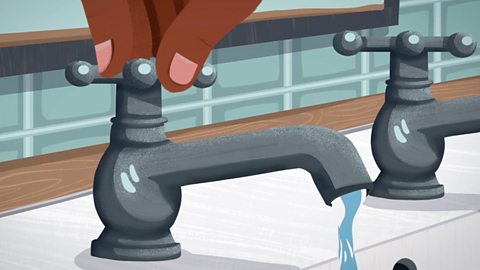How do humans impact the environment?
Our environment is the place that we live in.
We have a responsibility to take care of both our local environment and our global environment. We should keep them healthy, nice places to live for ourselves and others.
In this article you can learn about:
- How we can have a positive impact on our environment
- The advantages and challenges of looking after the environment
This resource is suitable for environment and sustainability topics for primary school learners.
Video - Our impact on the environment
In this video, discover how we can take care of the environment through recycling, saving water and other ideas.
We’re all part of a local environment and the global environment.
The global environment is all of planet Earth.
While the local environment is where you live, play and go to school.
And we can do things to help both of them.
Take your local park; it’s home to lots of creatures.
Some you’ll see easily - others, you’ll have to look out for.
But all of them can be harmed by litter.
So, always take your rubbish home, or maybe even help out with a litter pick.
And that’s not the only way to help wildlife.
Insects are really good for the environment; they pollinate crops, clean up animal and plant waste and attract other, bigger animals.
More insects means more birds and badgers!
So, build up a pile of twigs, wood and leaves in a quiet corner – and, ta dah - you have an insect hotel!
Add a swimming pool and pretty soon the customers will be flocking in!
Ponds also attract loads of insects and birds, and other species, like frogs.
You could ask your teacher or parents whether there’s anywhere local to plant flowers or trees.
They attract wildlife, improve air quality and they’re just nice.
And trees really help the global environment too - by soaking up carbon dioxide and slowing down climate change.
There are other ways to help local and global environments, like, instead of using a car for short journeys, use people-power!
This reduces local air pollution and global carbon dioxide emissions.
If you can grow some of your own food at school that helps the global environment too.
The more we grow ourselves, the less needs to be transported from other countries by ships and lorries.
How about giving clothes you’ve grown out of to charity shops or clothes banks?
You could even do a clothes swap with friends.
New clothes take lots of time and energy to make.
And you know that litter you picked up?
Well, if you put it in the recycling, rather than the general waste, it gets recycled into cans, bottles and even footballs!
So we don’t need to dig up as much oil for plastic or metal for cans.
And if we all do this, we’re not just helping our local park or area, we’re helping the whole world!
How can we have a positive impact on our environment?
Reduce, reuse, recycle
Litter is a big problem. An estimated 8 million tonnes of plastic alone are dumped in our oceans every year. This is extremely harmful for the creatures who live in it.
Many richer and developed countries send their litter to poorer, less developed countries to deal with. This is not fair or sustainable:
- It stops people in developed countries from understanding the amount of litter they produce and prevents them from taking responsibility for it.
- The countries that this litter is sent to are often unable to deal with it properly so it ends up polluting their environment or dumped into the ocean.
We can cut down on the amount of litter and waste we create if we:
- think carefully about what we need
- reduce the amount of things we buy or use
- reuse things we already have or give them to someone else who can use them
- recycle things in the correct recycling bins once we have finished with them

Image caption, Reduce
Do you really need the latest technology or clothes? (RayArt Graphics / Alamy Stock Photo)
Image caption, Reuse
Try and reuse clothes or other things you already have. Or you could give them to a charity shop so that other people can use them. (keith morris / Alamy Stock Photo)
Image caption, Recycle
Recycling bins normally tell you what they accept - and what they don't. (wda bravo / Alamy Stock Photo)
1 of 3
Bin litter properly

Any litter that can't be reused or recycled needs to be binned properly. A really important part of our local environment is its wildlife. Human litter can harm animals and insects by damaging their habitats, injuring them and making them ill.
The good news is that it ľ±˛ő˛Ô’t hard for us to solve this problem: Hold on to your litter until you can find a public bin or take it home with you. You can even do litter picks with your adult - just make sure you are protected and don’t pick up any litter with your hands.
Litter doesn’t look very nice either so by helping to reduce litter you will make your environment a more enjoyable place for everyone!

Give wildlife a place to live and things to eat
A healthy environment is one with plenty of wildlife!
Insects, worms and other creepy crawlies play a vital role because they help to pollinate plants and larger animals feed on them. If insects are around, birds and other animals will follow!
We can help nurture our local wildlife by making bug hotels, little ponds and bird feeders to support the living things in our area.
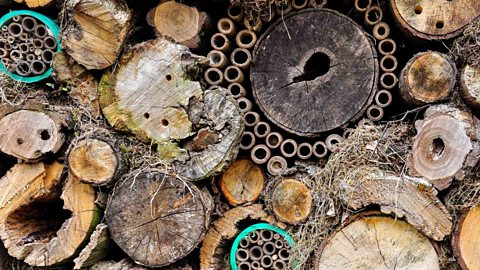
Image caption, Bug hotels
Make a safe shelter for bugs by piling up material like dead wood, bark, dry leaves and stones. Build it somewhere it will get some sun as well as some shade to attract all sorts of creepy crawlies. (Andrew Kearton / Alamy Stock Photo)
Image caption, Ponds
All living creatures need water to survive. Creating a pond is a great way to attract and support wildlife. (Mark Boulton / Alamy Stock Photo)
Image caption, Bird feeders
Feeders are popular with birds. Filling them with different seeds will attract a variety of species to your area. (Alan Williams / Alamy Stock Photo)
Image caption, At school
You could even ask your school to create a wild patch. Add shelters, water and food supplies to see what difference they make to local wildlife! (Julio Etchart / Alamy Stock Photo)
1 of 4
Plant more trees and plants

We need trees and plants to survive – they produce oxygen, which we need to breathe. They also soak up lots of carbon dioxide, preventing it from going up into the Earth’s atmosphere. In doing so, trees and plants slow down global heating.
Globally, there are lots of trees being cut down. We can make a difference by planting trees and plants in our local area. Your teacher might be able to lead a class project to do this if you suggest it. Or you can plant trees and plants in your garden if you have one. If you don’t, there are usually local projects that you can get involved in to plant trees and shrubs in your local area.
You might also be able to grow some food in your garden or in your school. This is a sustainable way of getting food without it having been transported on polluting lorries and ships.
- Learn about the importance of trees and forests with Isla and Connor: Forests
- Find out about food miles and the benefits of eating local food: Sustainable food

Walk, wheel or use public transport more often

You can cut out shorter journeys in cars to improve the air quality and reduce pollution in your local area. Fewer car journeys means lower carbon emissions. That helps reduce climate change and helps our global environment.
Walk or wheel these journeys instead and you’ll also get fit and healthy!
Learn more:

Advantages and challenges of living sustainably
Advantages
Your local environment (your school, community and home ) will have better air quality, healthier people and less litter.
Wildlife in your area will thrive which is the sign of a naturally healthy place. This means we can learn lots about different types of animals, insects and birds that we share a place with.
Your community will be a nicer place to play in. More trees and less litter is always a good thing!
Challenges
It can cost slightly more to buy things that are more local and have less food and clothing miles.
It can take a little more time to begin with to figure out where to recycle everything and where to buy things that are more sustainable.
But these disadvantages are massively outweighed by the advantages and benefits for our local environment.

Key words about the environment
Sorry, something went wrongCheck your connection, refresh the page and try again. – The local area around your home. It is where you live, play and go to school.
Sorry, something went wrongCheck your connection, refresh the page and try again. – The whole of Planet Earth, made up of our local and national environments. It is the rest of the world, outside of our locality.
Sorry, something went wrongCheck your connection, refresh the page and try again. – Places where animals live. A habitat will provide an animal with shelter, food and water. Different animals around the world live in different habitats and can include forests, grasslands, deserts and mountains.
Sorry, something went wrongCheck your connection, refresh the page and try again. - Doing something that will cause little or no damage to the environment and will be able to continue for a long period of time.
Sorry, something went wrongCheck your connection, refresh the page and try again. - A gas, in its most common form, that is found in the Earth’s atmosphere. It is a greenhouse gas that can be harmful to the environment as it contributes towards global warming.
Sorry, something went wrongCheck your connection, refresh the page and try again. - This is the long-term change in weather patterns (temperature, wind, rainfall etc.) on Earth, including its side-effects, for example increased drought and flooding.
Sorry, something went wrongCheck your connection, refresh the page and try again. - The release of carbon in to the earth’s atmosphere which contributes to climate change.
Test your knowledge
Quiz
Challenge

Make a leaflet
Tell other local people about the advantages of taking care of your local environment.
Make sure to include information about how to take care of the environment and include images to illustrate your messages.
Feeling active?
Create a shelter for bugs or carry out a litter pick.
Count the number of bugs before you build a shelter and then again a few weeks after, or record the different types of litter found and put this in a chart.
How to make a bug hotel. videoHow to make a bug hotel
Use materials that you find outside to help you make your own bug hotel!
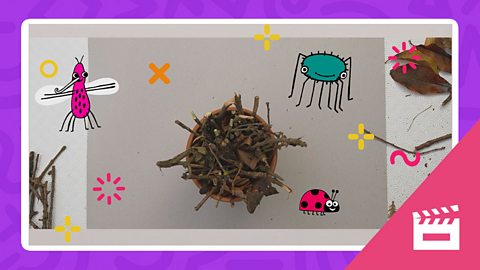
How to create a leaflet. revision-guideHow to create a leaflet
Find out what makes a good leaflet and how to create one.

More on Sustainability
Find out more by working through a topic
- count3 of 28
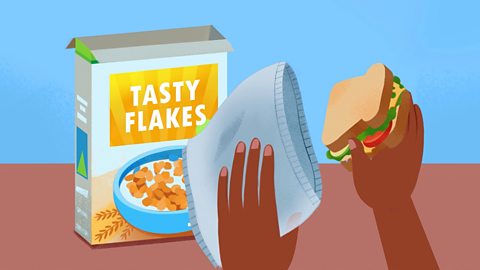
- count4 of 28
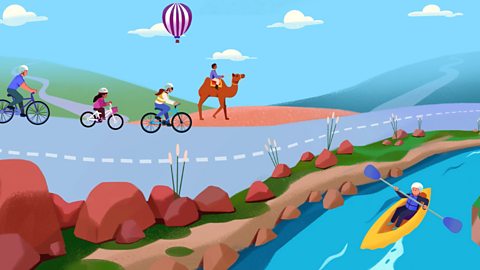
- count5 of 28
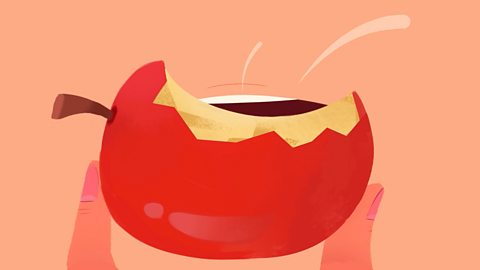
- count6 of 28
